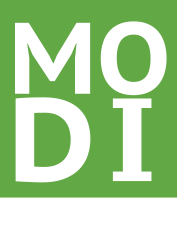Meetings have a bad rap for being long, boring and unproductive. However, with the right planning, practice and time management, they can become a productivity tool for your team. Here are 9 must-do preparation tips to help you run more effective meetings.
1. Define a clear purpose. Productive meetings have a goal that can be summed up in one to two sentences. Before setting the meeting, ask yourself why you want to meet and what you hope to get done. Crammed meetings can be a real drain on time and energy; commit to focusing on only what matters for accomplishing your objective.
2. Make an agenda. Consider your agenda a strategic roadmap for your meeting: define goals, create a structure, and incorporate action steps for participants. Be sure that all agenda items relate to the topic. Distribute the agenda by email at least one day in advance so everyone has a chance to review it ahead of time, and attach any required reading material and prep work to your email.
3. Keep it short. Plan for regular meetings to be one hour or less. When creating your agenda, allocate a certain amount of time for each discussion topic. Is there enough time to cover each one? Are there extra details that can be handled by individuals instead of the group? Limiting what’s included will increase your meeting’s efficiency. Stick to one or two pages and use bullet points for each topic.
3. Limit travel. Is your business spread across multiple locations? Time spent commuting across town for meetings is dead time. Instead, use an online meeting tool to host your meetings virtually. Good options include GoToMeeting, Cisco WebEx and Google Hangouts. There is no cost for attendees to join, and they’ll save hours every week.
4. Ban distractions. Smartphones and tablets are great for conducting business but can zap meeting productivity. Users tend to tune out what’s being discussed, which leads to additional questions, repeating information, and running over schedule. Unless these tech tools are needed, tell attendees to switch them of or leave them behind.
5. Start on time. Late starts lead to late finishes. Kick off meetings at precisely the time noted on the agenda. Doing so will show everyone involved that you value and respect their time.
6. Use prep work. Did you distribute prep work prior to the meeting? Be sure to use it during the meeting. Attendees will feel their preparation time was well spent, and you’ll underscore the importance doing legwork up front.
7. Stay on schedule. Meetings that run too long make it difficult for attendees to maintain their focus. Sidetracks and tangents cause meetings to draw out and waste everyone’s time. When conversations deviate from the agenda, get back on track by parking unrelated topics and refocusing the group on what matters.
8. Track progress. It’s important to maintain a good record of what happens during each meeting. Web-based tools like LessMeetings, Evernote, Google Docs and Meetin.gs will help you keep track of meeting minutes, important decisions, and next steps.
9. Assign action items. Give ownership of next steps to participants. Identify actions items that will need follow-up and set completion dates.
What hacks or strategies help keep your meetings effective and productive? Share your tips in the comments below.






